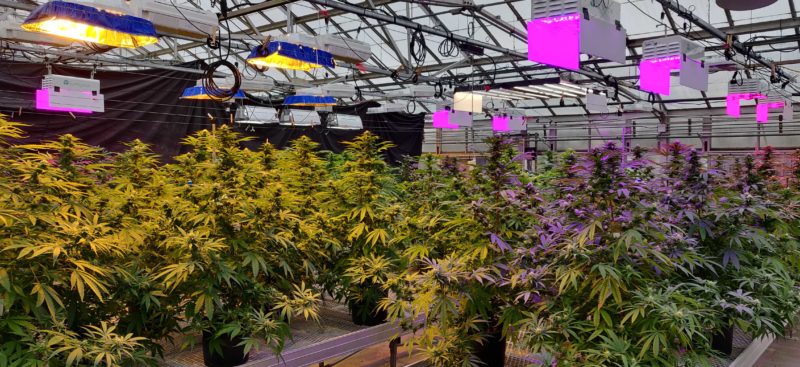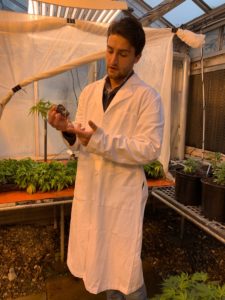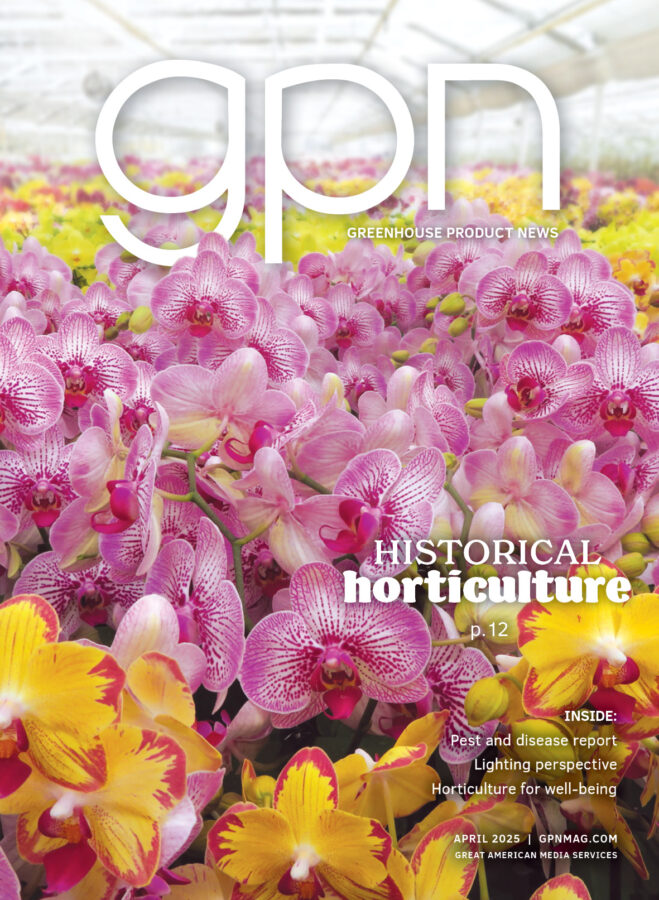
How Much Could Hemp Benefit from Supplemental Light?
While hemp may not be the cash crop many growers initially thought it would be, there are growers who are looking for ways to make it a profitable one. Numerous universities across the country are looking to provide growers with production and marketing assistance. Based on the interest of growers and university researchers, hemp still holds a lot of potential for both controlled environment and field growers.
Cornell University horticulture professor Neil Mattson, who is a member of the Cornell Hemp Research Team, is conducting a variety of studies including the use of greenhouse supplemental lighting for use on controlled environment crops.
“Initially controlled environment growers were thinking of using greenhouses for propagation of young hemp transplants that would then be transplanted into the field,” Mattson says. “However, there are a couple of commercial hydroponic lettuce growers we are working with who are doing quite a bit of greenhouse hemp production. In the same way that we are interested in controlling light and carbon dioxide for vegetable crops, these growers are interested in the impact light and carbon dioxide can have on hemp production.
“In my mind, the economics of greenhouse hemp production for CBD extraction remains uncertain. We have heard of growers producing higher value products such as smokable CBD hemp, or doing their own extraction/ value-added. Currently New York State’s hemp program doesn’t allow smokable hemp products. However, controlled environment growers in other states could sell the flowers where smokable hemp products are permitted.”
IMPACT OF SUPPLEMENTAL LIGHT ON HEMP
Mattson is working with graduate student Jack Wellhofer to determine the effects of blue light on hemp plant physiology and the overall flower/CBD yield.
“This research is not being conducted to address medical marijuana,” Mattson explains. “We are looking at the effect blue light has on CBD and THC levels. This research aims to help growers who will look for lighting techniques that can enrich the CBD content while not surpassing the legal THC threshold of 0.3%.”
The lighting research was conducted using the hemp strain TJ’s CBD, which, according to TJ’s Gardens, tests from 13 to 18% CBD. Plants were grown under eight different light treatments, including high pressure sodium, metal halide and LED lights. Six different LED treatments were trialed including a white broad spectrum LED, four treatments consisting of different ratios of red and blue light and one treatment where plants were grown under HPS lights and then finished under high blue light.

“We are trying to test how light would affect the stature or the height of the plants as well as yield,” Mattson says. “Producing more compact plants can be desirable. In some cases, if plants grow too tall they can become unmanageable, especially in shorter greenhouses. For smokable flowers or buds, growers want tight or more compact inflorescences instead of loose, longer inflorescences.
“At the same time we want to look at the actual yield, which would be the weight of the flowers after air drying multiplied by the CBD concentration. In lettuce production, higher blue light can produce more compact heads of lettuce, resulting in a 30% lower fresh weight or harvestable yield. We want to determine the effect of these different ratios of red and blue light on hemp yields.”
A related objective of this lighting research is to determine if the ratio of blue light affects the actual CBD concentration.
“From the medical marijuana world, there is anecdotal evidence that higher blue light produces higher THC content,” Mattson shares. “In our case, we need for the THC level to be less than 0.3%. We want to see if blue light affects CBD and THC and if it affects these cannabinoids in the same way. Does blue light promote both CBD and THC or does it preferentially promote one of these compounds?”
He says they can only conduct research with hemp crops that fall under federal guidelines. But those implications could affect growers producing medical marijuana.
“We are looking at the effect blue light has on CBD and THC to help growers who will look for lighting techniques that can enrich the CBD content while not surpassing the THC threshold.”
FASTER, MORE UNIFORM ROOTING
In studies being conducted at Utah State University, graduate research assistant Mitch Westmoreland is looking for ways to improve medical hemp propagation using LEDs.
According to Westmoreland, hemp, in general, has a high photosynthetic rate. “Hemp cuttings can maintain a relatively high photosynthetic rate under high light if they are kept well hydrated,” he says.
“We are working on rooting cuttings under LEDs at a higher intensity than most growers provide in greenhouse propagation. There is a lot of variability in rooting among hemp cultivars and even within a cultivar. We are looking to produce uniform, quick rooting cuttings using LEDs.”
Westmoreland is trialing four hemp cultivars. Cuttings were rooted in a greenhouse with and without LED supplemental light.
“Using LEDs we doubled the daily light integral (DLI) from about 10 moles per day to 20 moles per day,” he says.

Westmoreland found that two of the four cultivars had significant increases in rooting under LEDs. Trump (T1), one of the two hard-to-root cultivars, takes a lot of time to root and the rooting is very uneven. The other cultivar, Tokyo, is slower to root. It eventually produces an adequate amount of roots; it just takes longer.
“With both of the hard-to-root cultivars, rooting increased by about 50%,” he says. “There was a significant increase in rooting. The other two cultivars (BaOx and Cherry) in the trial root relatively quickly and uniformly. Increasing the light level on these two cultivars did not significantly improve rooting.”
In addition to the increase in the amount of rooting for the two cultivars, Westmoreland said there was a decrease in the time for the cuttings to root under the LED lights.
“We pulled the cuttings of all the cultivars from the greenhouse after 11 days,” he explains. “For those two cultivars that showed an increase in rooting, rooting occurred about two days faster.
“This is important for growers who are producing millions of liners. Reducing time to rooting and improving consistency and uniformity are big concerns.”
A detrimental effect of increasing the light level with LEDs was yellowing of the leaves four to six days after treatment began. According to Westmoreland, this is an active area of research and they will be looking at why this is happening as well as what steps can be taken to avoid it.
“We plan to monitor the photosynthetic rate over time as the cuttings root,” he says. “The turnover rate of chlorophyll is a few days. These unrooted cuttings are being pushed under high light and they may not be able to synthesize enough chlorophyll.
“Although there was an increase in rooting success, the quality of the cuttings was lower than those rooted without supplemental light. We showed that we could increase rooting using high light from LEDs, but growers ultimately want to produce high-quality transplants that look presentable. We will continue working to optimize the propagation of medical hemp using LEDs.”
For more information, contact:
Neil Mattson, Cornell University, School of Integrative Plant Science, Horticulture Section, Ithaca, New York; 607.255.0621; nsm47@cornell.edu; www.cornellcea.com; hemp.cals.cornell.edu; www.greenhouse.cornell.edu
Mitch Westmoreland, Utah State University, Plant, Soils and Climate, Crop Physiology Laboratory, Logan, Utah; mitchwestmoreland@gmail.com; cpl.usu.edu









